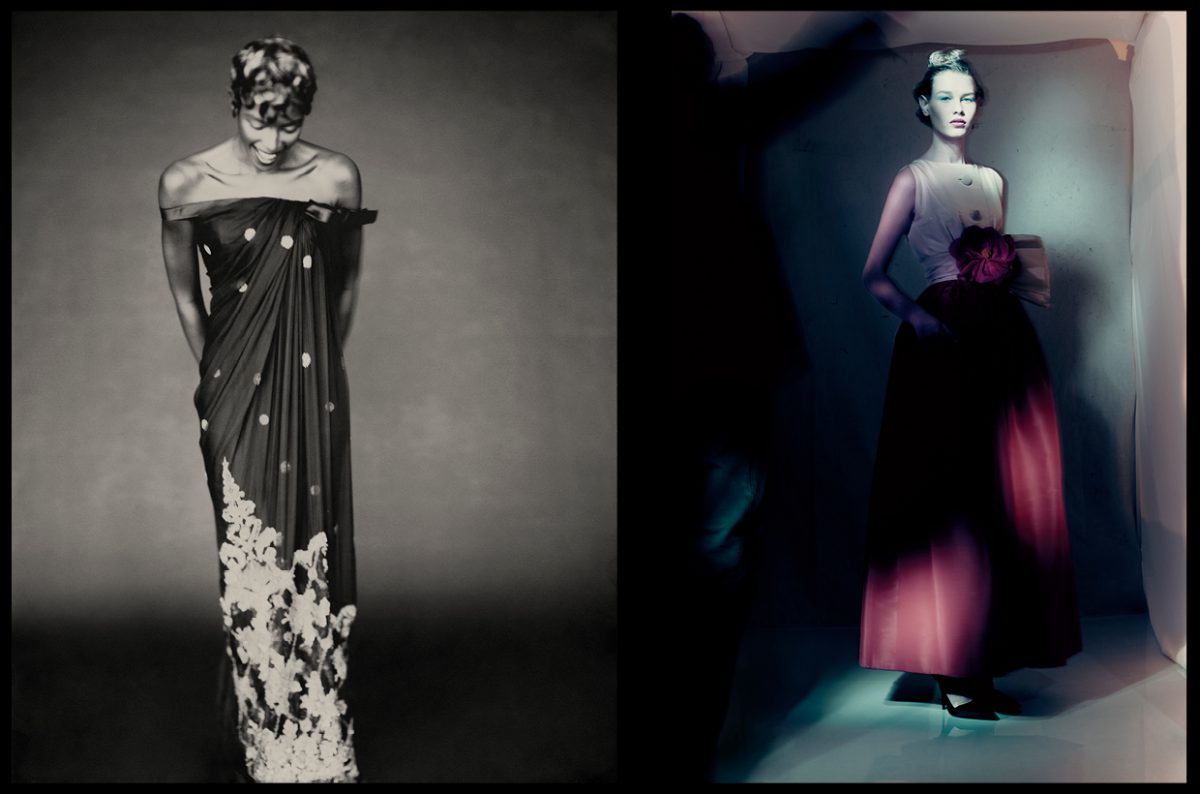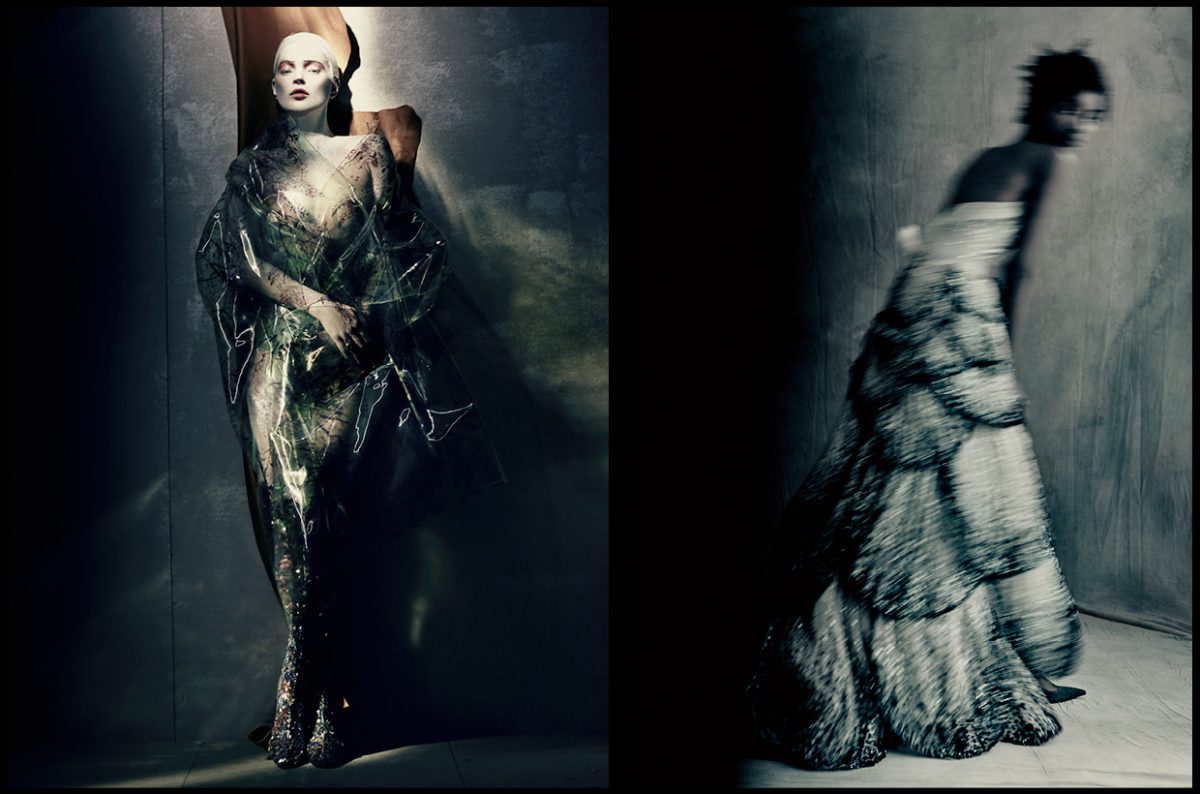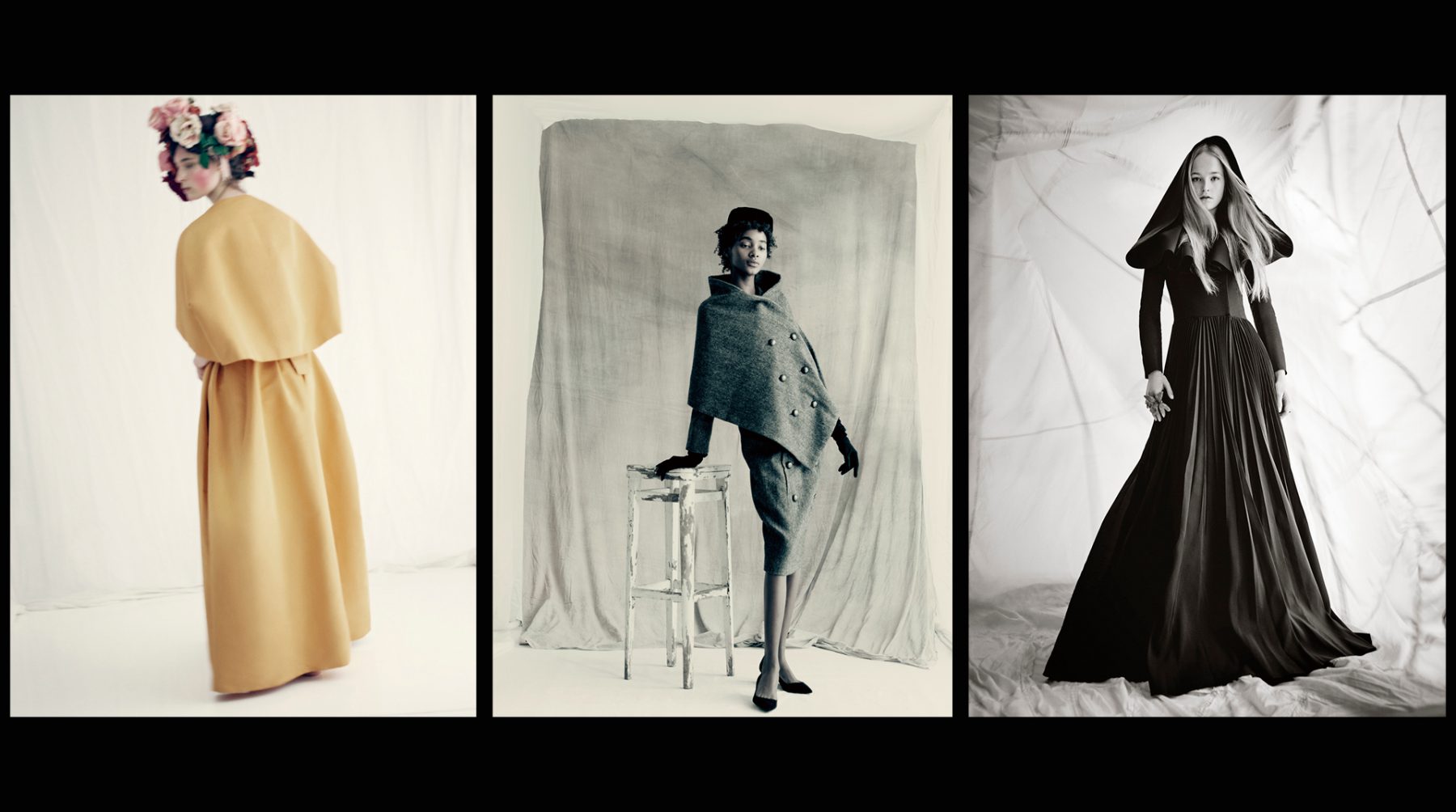Dior by Eva Müller-May | 23rd November, 2018 | Personalities
The House of Dior has been the embodiment of haute couture for over 70 years. The founder, Christian Dior, singlehandedly revolutionized the fashion world, celebrating women and the female form with ever-changing silhouettes and works of art made with lace and silk. His successors faithfully continued his vision. A new book shows stunning Dior designs from 1947 to the present – page upon page of pure beauty.
Stand in line? It’s unavoidable at the fashion shows in Paris. But in front of a bookstore? That’s something that only happens when the legendary couture house Christian Dior and the celebrated photographer Paolo Roversi present a joint book: Dior Images Paolo Roversi, a sumptuous collection of color plates. This dazzling 170-page retrospective presents breathtakingly unique dresses from between 1947 and 2017. Just like Champagne can only come from the region of the same name in France, haute couture – the high art of dressmaking – is a protected term used exclusively for custom garments made in Paris. Since 1868, the association Chambre Syndicale de la Haute Couture Française has been in charge of deciding when a fashion house is deemed worthy of the haute couture epithet. After World War II, there were around 200 haute couture houses in Paris; now, only 14 full members remain. Twice a year, the exquisite garments are shown in the fashion capital, hand-sewn and embellished in countless painstaking hours of work. Each dress is unique and eye-wateringly expensive, but deservedly so. A haute couture gown can cost anything from tens of thousands to hundreds of thousands of euros. As there are very few women in the world who can afford to wear haute couture, the couture houses have taken to ensuring visibility by lending their beautiful dresses to stars to wear on the red carpet, watched by the world’s media. Social media has harnessed the power of haute couture as a means of projecting a certain image – and advertising. The shows are lavish super-events with spectacular settings. They may only last minutes, but every aspect is designed to impress itself indelibly on the viewers’ memory.
The images posted from these events, viewed a million-fold, bring haute couture – until now the preserve of the privileged few – to the masses, allowing them to experience it almost live. Compared with the instantaneous impact of social media, this recently published book, with an introduction by the Italian philosopher Emanuele Coccia, seems almost archaic. But Paolo Roversi is a self-confessed book fanatic: “An apartment without books is worse than one without windows,” he says. His studio in the 14th arrondissement of Paris is absolutely minimalistic: bare walls, parquet floors, a small stage. A sheet of white linen forms the backdrop, its folds resembling those so beloved of the Old Masters. “Taking photographs out on the streets means having to work with limitations. Anything can happen in the studio,” says Roversi, explaining his enduring affinity for studio photography. Roversi works exclusively with a 20 x 25 Polaroid camera, perfecting the lack of focus. While the technology may seem rather quaint, the resulting photographs have an intriguingly mystical quality. And, like a haute couture gown, each of his Polaroids is a one-of-a-kind work of art.
Roversi’s style is unmistakeable, enduring and hence timeless. “I try to subtract rather than add. Little by little, I subtract until the inner beauty of the model has space and the soul is revealed.” For Roversi, models are not clotheshorses, but artists. Whether he’s photographing fashion, people or landscapes, at heart he is always a portrait photographer. “I dive deeper into my subject, try to penetrate it, to reveal something rather than simply reproducing reality.” His soulful pictures are in great demand for advertising campaign.
Paolo Roversi was born in 1947 in Ravenna in northern Italy. This was the year Christian Dior presented his first haute couture collection at the Avenue Montaigne in Paris, in the salons of the townhouse at number 30, a place that has since attained legendary status for fashion experts and enthusiasts. Back then, just after the end of the war, the resources were scarce. That didn’t stop the designer from making lavish use of fabrics. He created a silhouette that marked the end of the austere, uniform-like wartime style and which electrified the entire world: the “New Look” used light colors, petal shapes, round shoulders, nipped-in waists, full skirts, tulle – fashion had become feminine again. The collection catapulted Christian Dior to global fame and acclaim. The designer, who had originally studied political science, ran an art gallery and dreamed of becoming an architect, was not just exceptionally creative, he was also an astute businessman. Accordingly, he changed the silhouette every six months: zigzags and tulip shapes, the H, A and Y-lines. And, of course, the matching accessories. The styles a lady was wearing in the spring would be turned upside-down by the time fall came around.
Christian Dior added speed to the fashion industry. He founded the prêt-à-porter line in 1949 and employed nearly one thousand people in his 28 ateliers. His haute couture creations were a byword for the most extravagant luxury. When Soraya married the Shah of Persia in 1951, she did so in a Dior dress of 37 meters of silver lamé, appliqued with 20,000 feathers and 6,000 sequins. Hollywood stars like Marlene Dietrich and Rita Hayworth, or the Duchess of Windsor, were ever-loyal customers, faithfully following Dior’s fashion decrees.
In 1957, ten short years after his dazzling start as a designer, Christian Dior suffered a heart attack while on vacation and died. He was only 52 years old – but he had changed the fashion world forever and built the foundation for a global empire. Only a few months previously, he had been on the front page of Time Magazine. Grieving Parisians paid tribute to the couture star by carpeting the area around the Arc de Triomph with bouquets. Dior was listed on the stock market in 1991 and remains one of the biggest brands in the luxury segment. The Forbes List puts the company’s market value in 2018 at US $76.4 billion. Last year, the house of Dior celebrated its 70th anniversary and, to mark the event, the Musée des Arts Décoratifs put on a gigantic six-month exhibition.
In the 60 years after Dior’s death, a succession of six couturiers continued the master’s work. Each provided a different interpretation of Dior’s style, influenced by their own epoch: Yves Saint Laurent was the avant-gardist, Marc Bohan the classic stylist, Gianfranco Ferré the architect, John Galliano the eccentric, Raf Simons the minimalist. For the past two years, the house has been headed by a woman, the first female chief designer in its history: Maria Grazia Chiuri. Her debut collection for Dior was also a bold statement, with “Let’s all be feminists” emblazoned in large letters on a top.
Paolo Roversi knew the last four couturiers personally. From the 1990s on, he photographed their creations for international glossies, including the French and the Italian edition of Vogue, with top models such as Naomi Campbell and Nadja Auermann. The book presents a selection of his portraits. Roversi was also given exclusive access to haute couture pieces from the Dior Heritage Archive, outfits designed by Saint Laurent, Bohan and by the master himself, Christian Dior. The archive is the living memory of the House of Dior. For the past 30 years, head curator Soizic Pfaff has closely guarded fragile gowns, hats, shoes and jewelry, sketches, fabric swatches and order books. Since the end of 2017, Dior’s heritage has been kept in a secret location, locked away from the general public. Far below a courtyard off the Avenue Montaigne lies a 900-square-meter, super-high-tech facility. Cooled to between 18 and 20 degrees Celsius and with 50 percent humidity, the state-of-the-art warehouse has the ideal climate for conservation. Each of the more than 10,000 items here is carefully packed between layers of tissue paper in boxes in Dior gray. The staff wear white lab coats and gloves. The garments and accessories only leave this aseptic Fort Knox of the fashion world for exhibitions, if requested by the design department for research purposes – or for photo books.
Paolo Roversi recalls the shoot in his studio: “People were getting clothes out of boxes for me, saying, ‘Here’s a model from 1948-49.’” He was overwhelmed by how modern the clothes still were, saying: “It’s just astonishing and very moving.”






